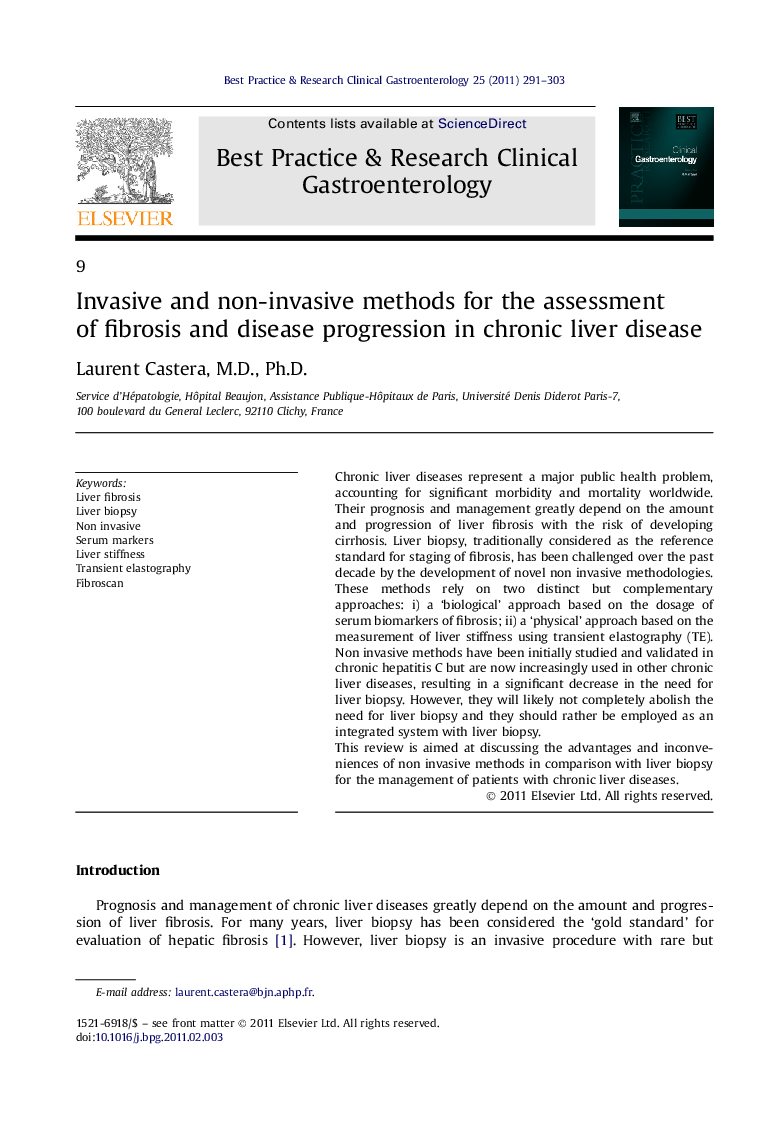| Article ID | Journal | Published Year | Pages | File Type |
|---|---|---|---|---|
| 6086532 | Best Practice & Research Clinical Gastroenterology | 2011 | 13 Pages |
Chronic liver diseases represent a major public health problem, accounting for significant morbidity and mortality worldwide. Their prognosis and management greatly depend on the amount and progression of liver fibrosis with the risk of developing cirrhosis. Liver biopsy, traditionally considered as the reference standard for staging of fibrosis, has been challenged over the past decade by the development of novel non invasive methodologies. These methods rely on two distinct but complementary approaches: i) a 'biological' approach based on the dosage of serum biomarkers of fibrosis; ii) a 'physical' approach based on the measurement of liver stiffness using transient elastography (TE). Non invasive methods have been initially studied and validated in chronic hepatitis C but are now increasingly used in other chronic liver diseases, resulting in a significant decrease in the need for liver biopsy. However, they will likely not completely abolish the need for liver biopsy and they should rather be employed as an integrated system with liver biopsy.This review is aimed at discussing the advantages and inconveniences of non invasive methods in comparison with liver biopsy for the management of patients with chronic liver diseases.
